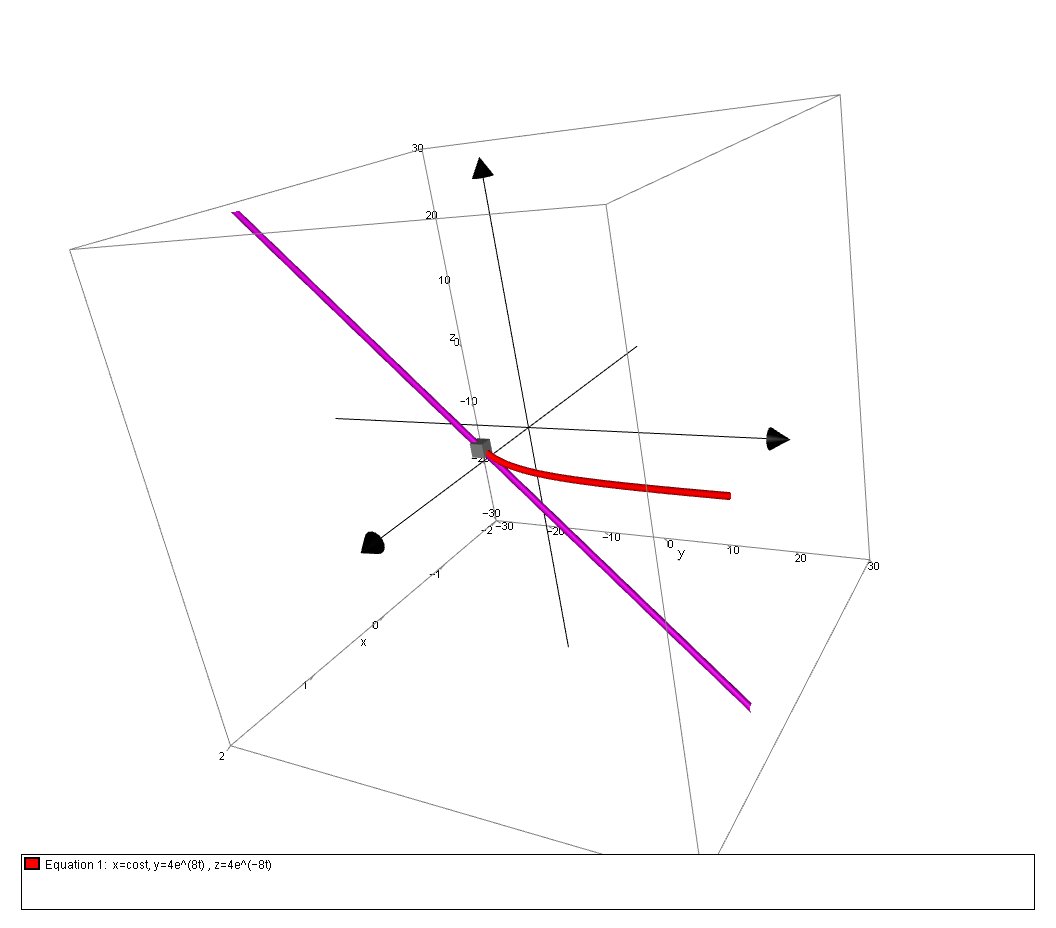How do you find parametric equations for the tangent line to the curve with the given parametric equations at the point #( 1, 4, 4)#. #x = cos(t), y = 4e^8t, z = 4e^ -8t#?
1 Answer
# x=1 #
# y=4+lamda #
# z=4-lamda #
Explanation:
We have parametric equations as functions of
# x=cost \ => dx/dt=-sint #
# y=4e^(8t) \ \ => dy/dt = 32e^(8t) #
# z = 4e^(-8t) => dz/dt = -32e^(8t) #
In order to find the normal at any particular point in vector space we use the Del, or gradient operator:
# grad f(t) = dx/dt hat(i) + dy/dt hat(j) + dz/dt hat(k)#
# \ \ \ \ \ \ \ \ \ \ = -sint hat(i) + 32e^(8t) hat(j) - 32e^(-8t) hat(k) #
So for the particular point
So for this particular point, the normal vector to the surface is given by:
# grad f(0) = 0 hat(i) + 32 hat(j) - 32 hat(k) #
# " " = 32 hat(j) - 32 hat(k) #
# " " = 32 (hat(j) - hat(k)) #
So the tangent line is a line with direction
# vec r = ( (1), (4), (4) ) + lamda ( (0), (1), (-1) ) #
Which we can therefore parametrise (using
# x=1 #
# y=4+lamda #
# z=4-lamda #
We can confirm this graphically: Here is the surface (red)with the tangent line (purple):


